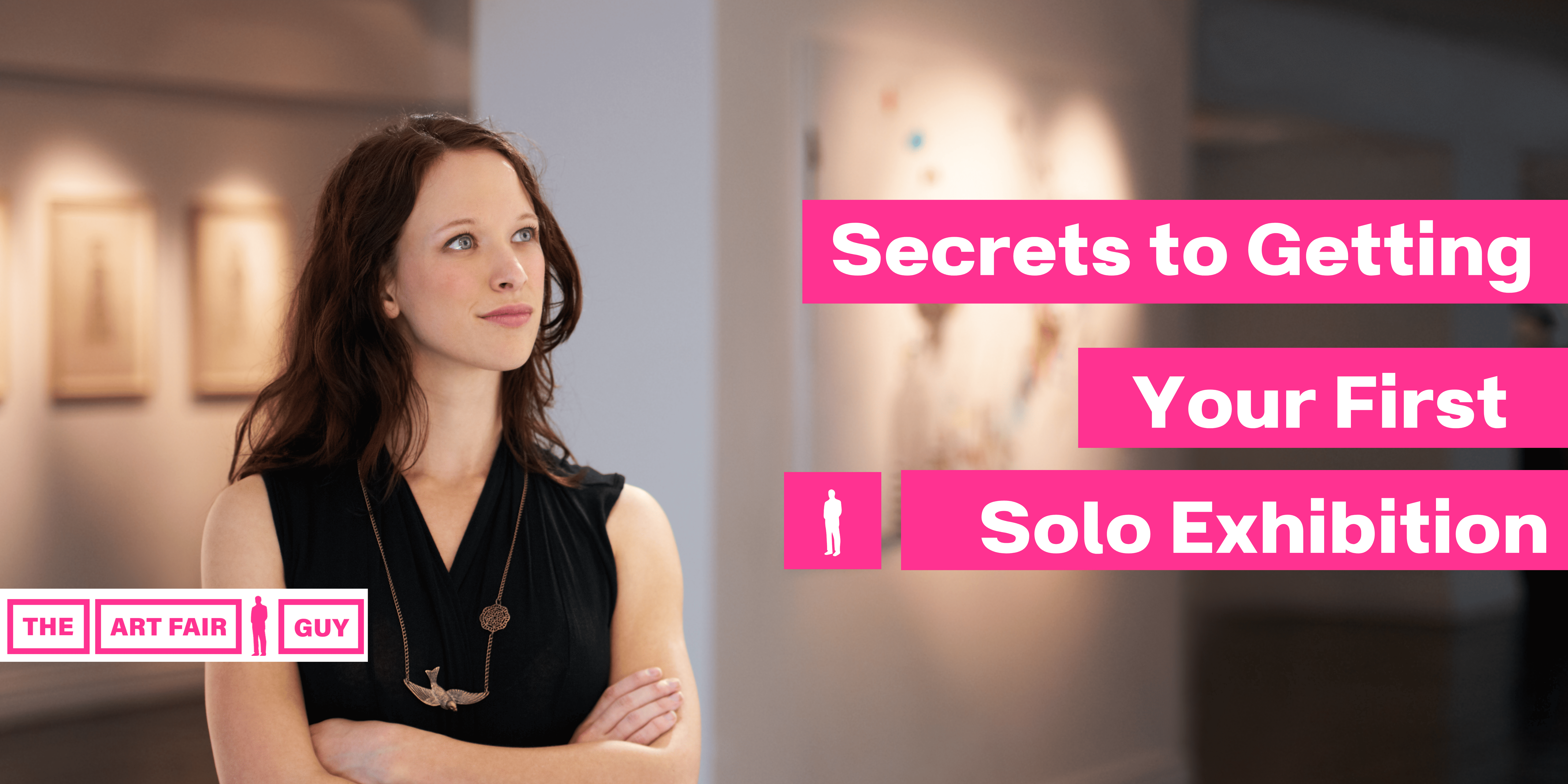Securing your first solo exhibition can feel like an intimidating and challenging goal, but with the right approach, it’s an achievable milestone in your artistic career. A solo exhibition provides an incredible opportunity to showcase your work, build your artistic profile, and connect with galleries, curators, and collectors. In this article, we’ll walk you through the essential steps and strategies to help you land your first solo exhibition.
1. Understand the Importance of a Solo Exhibition
A solo exhibition allows you to present a cohesive body of work, which reflects your style, vision, and artistic growth. It’s an opportunity to:
- Gain recognition in the art world.
- Build credibility as an artist.
- Establish direct relationships with potential buyers and curators.
- Increase your visibility in the art community.
A solo exhibition is more than just an event; it’s a stepping stone toward becoming a recognized figure in the art world.
2. Build a Strong Portfolio
Before applying for a solo exhibition, it’s crucial to have a well-rounded portfolio. Your portfolio will be the first thing galleries, curators, and art institutions look at. Make sure it includes:
- High-quality images of your best work.
- A consistent artistic style that is reflected throughout your work.
- Clear and professional descriptions of each piece, including dimensions, medium, and year created.
Your portfolio is the foundation of your solo exhibition pitch, so make sure it represents your work accurately and professionally.
3. Start Building Your Reputation
The road to your first solo doesn’t happen overnight. Before you apply for one, you should be working on building your reputation as an artist. Here’s how:
- Participate in group exhibitions: Showcasing your work in group shows can help you gain exposure and establish connections in the art community.
- Engage with art professionals: Build relationships with curators, gallery owners, and other artists to increase your chances of being considered for a solo exhibition.
- Create an online presence: Use social media platforms and your own website to showcase your work and connect with potential supporters. Share your process, thoughts, and progress as an artist.
Building a network and reputation will give you the credibility needed to secure a solo exhibition.
4. Research Potential Venues
When you feel confident in your portfolio and your reputation, it’s time to start researching venues for your solo exhibition. Look for spaces that align with your artistic style and goals. Consider these options:
- Art galleries: These are the most traditional venues for a solo exhibition. Look for galleries that have hosted solo exhibitions by emerging artists.
- Artist-run spaces: Many cities have independent spaces where emerging artists can showcase their work. These spaces often have less rigid application processes, making them an ideal starting point.
- Alternative spaces: Consider museums, cultural centers, or even cafes and restaurants that feature art exhibitions. These venues can help you reach a broader audience.
- Virtual galleries: With the rise of digital art, virtual spaces have become a popular way to hold solo exhibitions. This can help you reach a global audience without geographic limitations.
Make sure to thoroughly research each venue’s exhibition history, reputation, and the type of audience they attract before making a decision.
5. Create a Compelling Exhibition Proposal
Once you’ve found a venue, it’s time to pitch your solo exhibition. A strong exhibition proposal is essential to capture the attention of curators or gallery owners. A successful proposal should include:
- An artist statement that reflects your vision and intentions for the exhibition.
- Details of the work you plan to exhibit, including dimensions, materials, and any special considerations (e.g., installation requirements).
- A proposed timeline for the exhibition, including installation and opening dates.
- Any relevant exhibition history or art experience, such as past shows or awards.
- Promotional strategies you’ll use to attract visitors, such as social media campaigns or collaborations with art organizations.
A clear, professional, and compelling proposal can significantly improve your chances of securing your first solo exhibition.
6. Utilize Your Network
Networking plays a vital role in the art world, and it can be particularly valuable when seeking a solo. Don’t hesitate to:
- Reach out to gallery owners or curators you’ve met at group shows or networking events. Personal connections can often open doors to exhibition opportunities.
- Ask for recommendations: If you’ve worked with other artists, curators, or gallery owners, ask them for feedback or suggestions on potential venues for your solo exhibition.
- Leverage social media: Follow and engage with galleries and curators on platforms like Instagram and LinkedIn. Share your work regularly to build a following and attract potential exhibition opportunities.
The art world thrives on connections, so don’t underestimate the power of networking when planning your first solo exhibition.
7. Be Persistent and Patient
Landing your first solo exhibition takes time and perseverance. If you don’t receive a response right away, don’t be discouraged. Follow up on your proposals after a few weeks and continue to apply to other venues. Persistence is key to success in the art world, and the more proposals you send, the better your chances of being accepted.
8. Consider Collaborations and Artist Residencies
If you’re struggling to secure a solo exhibition on your own, consider applying for artist residencies or collaborating with other artists. Many artist residencies culminate in an exhibition, which can serve as a stepping stone to your first solo exhibition. Collaborating with another artist can also increase your exposure and help you develop new opportunities.
9. Market Your Exhibition
Once you’ve secured your solo exhibition, it’s time to start promoting it! Some effective marketing strategies include:
- Creating an event page on your website or social media platforms.
- Sending press releases to local art magazines, newspapers, and bloggers.
- Offering private viewings for collectors and art professionals.
- Collaborating with influencers or art critics to get the word out.
By marketing your solo exhibition effectively, you’ll not only attract visitors but also increase the potential for future exhibition opportunities.
Conclusion
Securing your first solo exhibition requires dedication, a strong portfolio, and a strategic approach. By building your reputation, networking with art professionals, and carefully selecting the right venue, you can land a solo exhibitionthat will elevate your career. Stay persistent, patient, and proactive, and soon enough, you’ll be ready to showcase your artistic vision to the world.
The Art Fair Guy offers expert consulting for artists looking to excel in art fairs and exhibitions. Whether you’re unsure where to start or need help pricing your art, we provide customized packages tailored to your individual goals. From showcasing strategies to personalized artistic assessments, we’ve got you covered. For details, visit The Art Fair Guy’s Consulting Packages, or reach out directly at office@theartfairguy.com to book a consultation.









